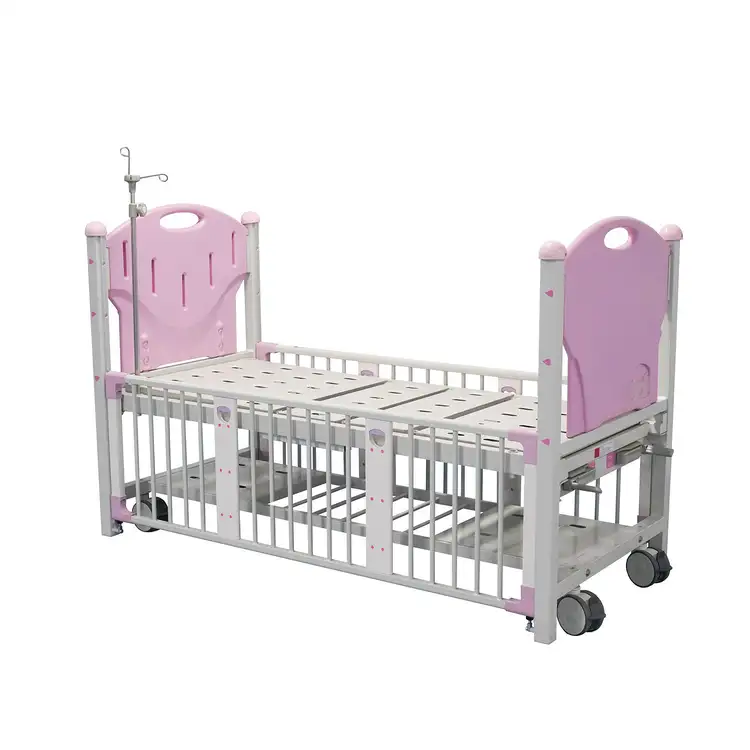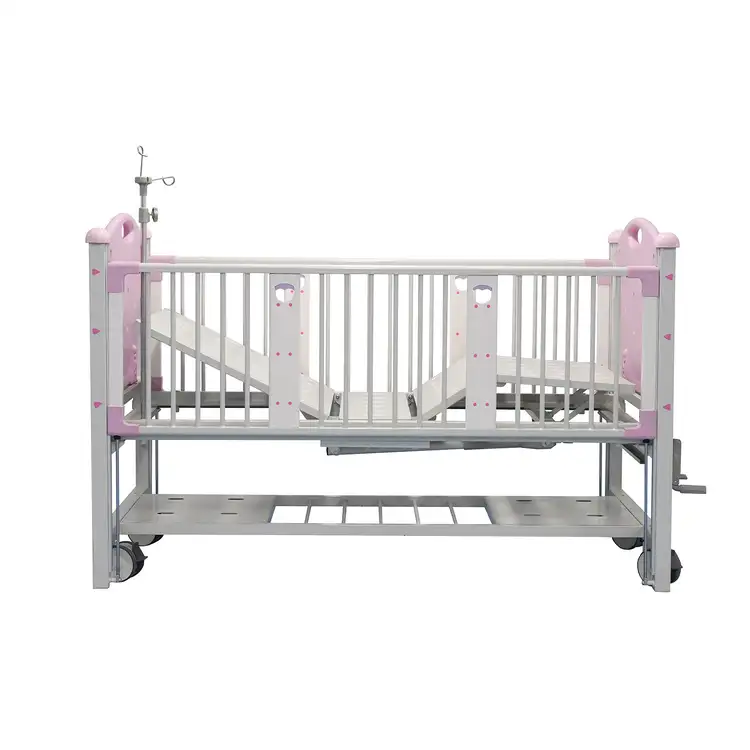Address
304 North Cardinal St.
Dorchester Center, MA 02124
Work Hours
Monday to Friday: 7AM - 7PM
Weekend: 10AM - 5PM
Address
304 North Cardinal St.
Dorchester Center, MA 02124
Work Hours
Monday to Friday: 7AM - 7PM
Weekend: 10AM - 5PM

A hospital pediatric bed plays a crucial role in ensuring that children receive the care they need in a safe and comfortable environment.
Welcome to My Blog!
Before we dive into the content, I’d love for you to join me on my social media platforms where I share more insights, engage with the community, and post updates. Here’s how you can connect with me:
Facebook:https://www.facebook.com/profile.php?id=100071234835011
LinkedIn:https://www.linkedin.com/company/74943205/admin/dashboard/
YouTube:https://www.youtube.com/@shandongexpertmedicalequip4695
TikTok:https://www.tiktok.com/@expertmedical
Now, let’s get started on our journey together. I hope you find the content here insightful, engaging, and valuable.
When it comes to pediatric care, the well-being and comfort of young patients are of utmost importance. A hospital pediatric bed plays a crucial role in ensuring that children receive the care they need in a safe and comfortable environment. Pediatric patients have unique requirements, and standard hospital beds may not be suitable for their needs. This is why every healthcare facility, whether it’s a children’s hospital, general hospital, or specialized care center, needs to invest in quality hospital pediatric beds.
In this blog, we will explore the significance of pediatric beds in healthcare, the essential features of a hospital pediatric bed, and why they are indispensable for ensuring the best care for young patients.

Hospital pediatric beds are specifically designed to meet the physical and emotional needs of young patients. Unlike adult hospital beds, these beds are made to accommodate the size and weight of children, from infants to adolescents. Pediatric beds are often equipped with adjustable heights, side rails, and specialized mattresses that ensure comfort and safety.
In addition to safety features, many pediatric beds are designed to be visually appealing to children. Bright colors, child-friendly designs, and playful elements can help reduce anxiety and make the hospital stay less intimidating for young patients.
Safety is a top priority when it comes to pediatric care, and hospital pediatric beds are equipped with several safety features to protect young patients. These features include:
These safety features are critical in preventing accidents and ensuring that children remain secure during their hospital stay.
Comfort is a key factor in pediatric care, and hospital pediatric beds are designed to provide optimal comfort for young patients. The mattresses used in these beds are often specialized to ensure the child is supported and comfortable throughout their stay. Memory foam mattresses or pressure-relieving pads are commonly used to minimize discomfort, especially for children who may be bedridden for extended periods.
In addition to physical comfort, emotional support is also important. Pediatric beds that feature fun designs or interactive elements can create a more welcoming environment for children. Being in a hospital can be a stressful experience for young patients, and having a bed that makes them feel safe and comfortable can help alleviate some of the anxiety they may feel.
| Feature | Standard Hospital Bed | Hospital Pediatric Bed |
|---|---|---|
| Bed Size | Designed for adults | Smaller size to fit children |
| Side Rails | Basic height | High, adjustable for safety |
| Mattress Type | Standard hospital mattress | Child-friendly, pressure-relief |
| Visual Design | Neutral or clinical | Bright, child-friendly designs |
| Safety Features | Minimal | Enhanced safety for children |
| Adjustability | Standard adjustability | Full adjustability for children |
This table highlights the key differences between a standard hospital bed and a hospital pediatric bed. While both serve the primary function of supporting patients during their hospital stay, pediatric beds are specifically designed to cater to the needs of children in terms of safety, comfort, and emotional well-being.

The primary benefit of investing in quality hospital pediatric beds is the enhanced safety they offer. As children are more vulnerable to accidents and injuries, pediatric beds with advanced safety features like adjustable side rails, height adjustment, and secure locking mechanisms are essential in preventing falls and other accidents.
Additionally, high-quality pediatric beds are constructed from durable materials that can withstand the active movements of children, ensuring that the bed remains stable and secure even in high-energy situations. This level of safety is not only reassuring for caregivers but also for the families of young patients, who want to ensure that their child is in a safe environment.
Children recovering from illness or surgery need to rest comfortably, and a high-quality hospital pediatric bed can significantly enhance their comfort during the healing process. The specialized mattresses used in pediatric beds are designed to support the child’s body, reducing pressure points and preventing discomfort or bedsores.
Comfort is closely linked to recovery, and a well-rested patient is more likely to recover quickly. By providing a comfortable and secure sleeping environment, pediatric beds contribute to better health outcomes for young patients.
Hospitals can be intimidating, especially for children who may not fully understand what is happening around them. Hospital pediatric beds that feature child-friendly designs and comforting elements can help create a more positive and calming environment for young patients. Bright colors, fun graphics, and interactive designs can make the hospital feel less clinical and more welcoming, reducing stress and anxiety.
Furthermore, pediatric beds designed with comfort in mind help children feel more at ease, which can lead to better cooperation with medical procedures and a more positive overall experience.
Investing in quality hospital pediatric beds is essential for healthcare facilities that cater to young patients. These beds offer critical safety features, enhanced comfort, and emotional support, all of which contribute to a better overall experience for children in hospitals. Whether it’s for general care, surgery recovery, or specialized pediatric treatment, a hospital pediatric bed is a vital tool in ensuring the well-being of young patients.
By choosing the right pediatric bed, healthcare providers can create a safer, more comfortable, and emotionally supportive environment that not only aids in the recovery process but also helps children feel more at ease during their hospital stay.
Hospital pediatric beds are specifically designed for children, offering features like smaller bed sizes, adjustable safety rails, and child-friendly designs that are not typically found in standard hospital beds. These features ensure that pediatric patients are safe, comfortable, and emotionally supported during their stay.
Key safety features to look for in a hospital pediatric bed include high adjustable side rails, height adjustability, sturdy construction, and rounded edges. These features help prevent falls, ensure ease of care, and provide a safer environment for young patients.
Hospital pediatric beds improve a child’s hospital experience by offering comfort, security, and a more welcoming environment. Beds designed with fun graphics and child-friendly elements can reduce anxiety, while features like pressure-relieving mattresses ensure physical comfort during their stay.
Yes, many hospital pediatric beds are designed to be adjustable to accommodate children of various ages and sizes. Features like adjustable bed height and side rails allow caregivers to tailor the bed to the specific needs of the patient.
By providing a comfortable and secure environment, hospital pediatric beds support faster recovery. The specialized mattresses help alleviate pressure points, while the safety features prevent accidents that could hinder the recovery process.